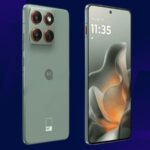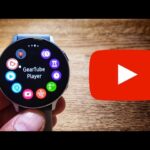There is a good chance that the mobile phone you own is not manufactured by Motorola. But it was not always this way: Motorola was once the brand most associated with the mobile phone, and the firm whose products first popularised them. The Chinese company has now made the announcement that the brand will no longer exist a year after Lenovo purchased it.
What was the problem with Motorola then? The invention of the mobile phone can be dated back to 1947 and a group of engineers led by Douglas Ring who were employed by Bell Labs in the United States. All the basic principles and features we now associate with a mobile phone and cellular network were established by this team, but the technology of the day was simply incapable of realising their visionary concepts. It wasn’t until April 1973 that a team of Motorola engineers led by Martin Cooper created the world’s first functioning cellular mobile phone. And even then there wasn’t a network for it to use: the first experimental cellular network was built in Chicago four years later, and didn’t reach the UK until 1985. Motorola was unquestionably the more innovative of the two major manufacturers and designers of mobile phones at the time—the other was Nokia. This company introduced us to the renowned DynaTAC 8000 in 1984, the MicroTAC, the world’s first flip phone, in 1989, and the StarTAC, the world’s first clamshell phone, which was also the smallest and lightest mobile phone of its time, in 1996. In 1991 Motorola released the world’s first GSM cellular handset (Motorola 3200). In 1993 it manufactured the world’s first mobile phone using the GSM 1800MHz band (Motorola m300), followed by the first tri-band mobile phone in 1999 (Motorola L7089). Together BT Cellnet and Motorola launched the world’s first GPRS mobile data service in 2000, using the Motorola Timeport T-260.
Motorola StarTAC, the smallest flip phone of its day. CC BY-SA, Nkp911m500 In point of fact, Motorola set world records from the beginning. The company that would become Motorola began life in 1928 as Galvin Manufacturing Corporation, of Chicago. It quickly established itself as a specialist in radio technology, developing the first in-car radios – hence MOTOR (representing the car) and VictrOLA (representing sound, from the Victrola Talking Machine Company).
The firm went on to create the first walkie-talkies for military use, the in-car radio-telephone, the world’s first pager, and we even heard Neil Armstrong’s immortal words when he stepped foot onto the lunar surface in 1969 thanks to Motorola radio technology. And this is in addition to the firm’s pioneering work on semiconductors, microprocessors (the Motorola M68000 family powered popular computers such as the Atari ST, Amiga and early Apple Macintoshes) televisions, and barcode scanners.
Motorola was the largest mobile phone manufacturer in the world before Nokia knocked them off their top spot in 1998. The Razr, the world’s best-selling clamshell phone and one of the thinnest ever produced, was released in 2004 and gave the company a brief resurgence in fortunes. But between 2006 and 2009, Motorola’s mobile market share plummeted from 21% to 6%.
How did everything go wrong? Motorola had a problem because it was a hardware technology company; however, beginning in the middle of the 2000s, software was driving the mobile phone industry. Motorola was weak in this area because their smartphones switched between Linux and Windows-based operating systems, and their interface was perceived as clunky in comparison to that of its rivals. Products such as the Motorola Q, a Blackberry-like smartphone with a QWERTY keyboard, fared poorly compared to the competition, while the arrival of the Apple iPhone in 2007 changed the game for everyone, as the mobile phone morphed into a pocket computer.











